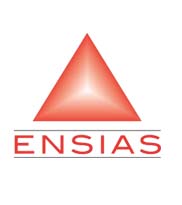- Accueil
-
L'Ecole
-
FORMATIONS
-
FORMATION INGENIEUR
-
Nouvelles filières offertes
- Ingénierie Intélligence Artificielle (2IA)
- Smart Supply Chain & Logistics (2SCL)
- Business Intelligence & Analytics (BI&A)
- Génie de la Data (GD)
- Génie Logiciel (GL)
- Ingénierie Digitale pour la Finance (IDF)
- Smart System Engineering (SSE)
- Data and Software Sciences (D2S)
- Cybersécurité, Cloud et Informatique Mobile (CSCC)
- REGLEMENT DES ETUDES DE L’ENSIAS CYCLE INGENIEUR
-
Nouvelles filières offertes
-
FORMATION INGENIEUR
- FORMATION CONTINUE
-
Recherche
- INTERNATIONAL
- ENTREPRISES
- VIE ESTUDIANTINE
- BIBLIOTHEQUE
LES DERNIÈRES INFORMATIONS
Random Forest Based Deep Hybrid Architecture for Histopathological Breast Cancer Images Classification
| Titre | Random Forest Based Deep Hybrid Architecture for Histopathological Breast Cancer Images Classification |
| Publication Type | Journal Article |
| Year of Publication | 2022 |
| Authors | Nakach, F-Z, Zerouaoui, H, Idri, A |
| Journal | Lecture Notes in Computer Science (including subseries Lecture Notes in Artificial Intelligence and Lecture Notes in Bioinformatics) |
| Volume | 13376 LNCS |
| Pagination | 3-18 |
| Mots-clés | Breast Cancer, Classification (of information), Decision trees, Deep learning, Diagnosis, Diseases, early diagnosis, Feature extractor, hybrid, Hybrid architectures, Image classification, Images classification, Learning systems, Magnification factors, Medical imaging, Random forest modeling, Random forests, Transfer learning |
| Abstract | Breast cancer is the most common cancer in women worldwide. While the early diagnosis and treatment can significantly reduce the mortality rate, it is a challenging task for pathologists to accurately estimate the cancerous cells and tissues. Therefore, machine learning techniques are playing a significant role in assisting pathologists and improving the diagnosis results. This paper proposes a hybrid architecture that combines: three of the most recent deep learning techniques for feature extraction (DenseNet_201, Inception_V3, and MobileNet_V2) and random forest to classify breast cancer histological images over the BreakHis dataset with its four magnification factors: 40X, 100X, 200X and 400X. The study evaluated and compared: (1) the developed random forest models with their base learners, (2) the designed random forest models with the same architecture but with a different number of trees, (3) the decision tree classifiers with the best random forest models and (4) the best random forest models of each feature extractor. The empirical evaluations used: four classification performance criteria (accuracy, sensitivity, precision and F1-score), 5-fold cross-validation, Scott Knott statistical test, and Borda Count voting method. The best random forest model achieved an accuracy mean value of 85.88%, and was constructed using 9 trees, 200X as a magnification factor, and Inception_V3 as a feature extractor. The experimental results demonstrated that combining random forest with deep learning models is effective for the automatic classification of malignant and benign tumors using histopathological images of breast cancer. © 2022, The Author(s), under exclusive license to Springer Nature Switzerland AG. |
| URL | https://www.scopus.com/inward/record.uri?eid=2-s2.0-85135002675&doi=10.1007%2f978-3-031-10450-3_1&partnerID=40&md5=892757314e050f81e9b0dba117f2d64a |
| DOI | 10.1007/978-3-031-10450-3_1 |
Revues:
LIENS UTILES
Localisation
Contactez-nous
ENSIAS
 Avenue Mohammed Ben Abdallah Regragui, Madinat Al Irfane, BP 713, Agdal Rabat, Maroc
Avenue Mohammed Ben Abdallah Regragui, Madinat Al Irfane, BP 713, Agdal Rabat, Maroc
![]() Télécopie : (+212) 5 37 68 60 78
Télécopie : (+212) 5 37 68 60 78
![]() Secrétariat de direction : 06 61 48 10 97
Secrétariat de direction : 06 61 48 10 97
Secrétariat général : 06 61 34 09 27
Service des affaires financières : 06 61 44 76 79
Service des affaires estudiantines : 06 62 77 10 17 / n.mhirich@um5s.net.ma
CEDOC ST2I : 06 66 39 75 16
Résidences : 06 61 82 89 77
- Compteur de visiteurs:634,776
Education - This is a contributing Drupal Theme
Design by WeebPal.
Design by WeebPal.



































